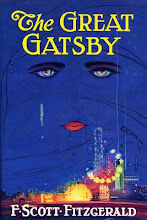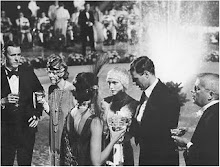The Different between old and new money

In these modern days of economic struggle, it is pretty easy for us to determine who has come upon ‘new money’ and some that have been rich beyond their years. On various occasions people of the ‘new money’ category have found that their money is much harder to hold on to than ‘old money’. This is due to the fact that people of the ‘old money’ case have deeply rooted their earnings; which would have to take a huge tragedy to get rid of.
One of the major topics explored in The Great Gatsby is the sociology of wealth, specifically, how the newly minted millionaires of the 1920s differ from and relate to the old aristocracy of the country’s richest families. In the novel, West Egg and its denizens represent the newly rich, while East Egg and its denizens, especially Daisy and Tom, represent the old aristocracy. Fitzgerald portrays the newly rich as being vulgar, gaudy, ostentatious, and lacking in social graces and taste.

Gatsby, for example, lives in a monstrously ornate mansion, wears a pink suit, drives a Rolls-Royce, and does not pick up on subtle social signals, such as the insincerity of the Sloanes’ invitation to lunch. In contrast, the old aristocracy possesses grace, taste, subtlety, and elegance, epitomized by the Buchanans’ tasteful home and the flowing white dresses of Daisy and Jordan Baker. What the old aristocracy possesses in taste, however, it seems to lack in heart, as the East Eggers prove themselves careless, inconsiderate bullies who are so used to money’s ability to ease their minds that they never worry about hurting others.
http://www.sparknotes.com/lit/gatsby/themes.html

The residents of East Egg are considered to be the “old rich”, which means that they have money that has been passed down for generations. The West Egg residents, on the other hand, as those who have “new money” – characters like Gatsby who were not born with the millions of dollars that they have. The relationship between these two groups is seen clearly in the first and only Gatsby party that Tom and Daisy attend. Tom, as most of the East Egg residents, feels that he is better than the West Egg residents. Tom makes numerous comments pertaining to this -- how he does not belong there or in reference to the other people who do attend the parties. The fact that Daisy tells Gatsby that she did not like the party also coincides with this feeling of “elatedness” from the East Egg residents. Additionally, those who were of the old rich do not feel the need to have to show off as those of West Egg would have done. Gatsby is a perfect example of this if you look at the color of his shirts, the color of his car, the clothes that he wears on his first meeting with Daisy, and the extravagance of his mansion.
http://www.enotes.com/great-gatsby/q-and-a/how-do-you-would-describe-relationship-between-60669




























































